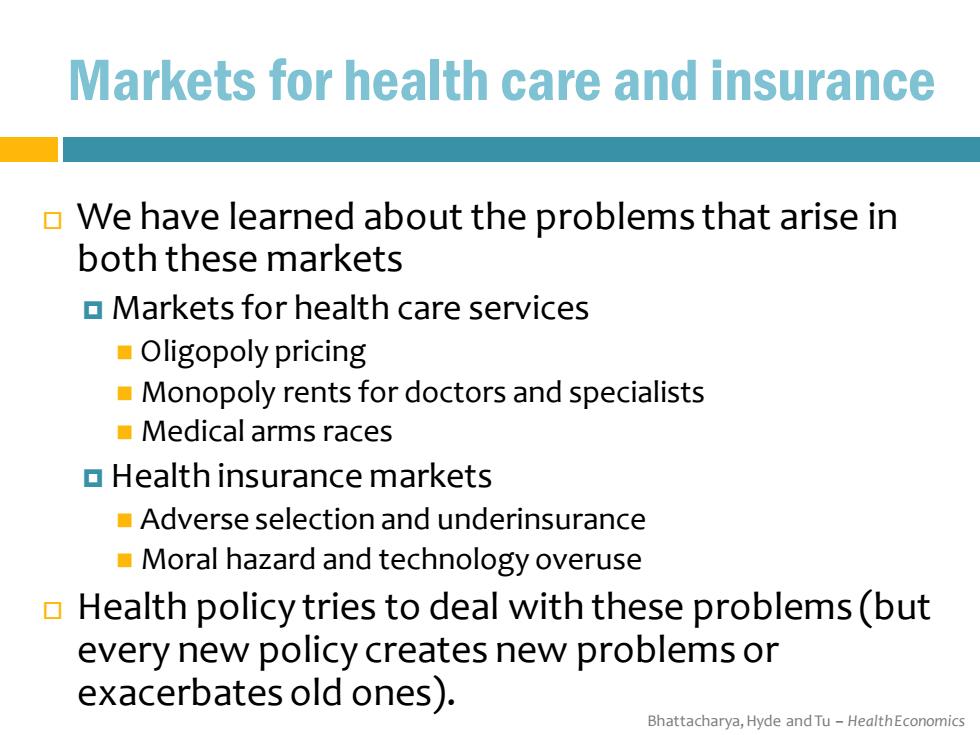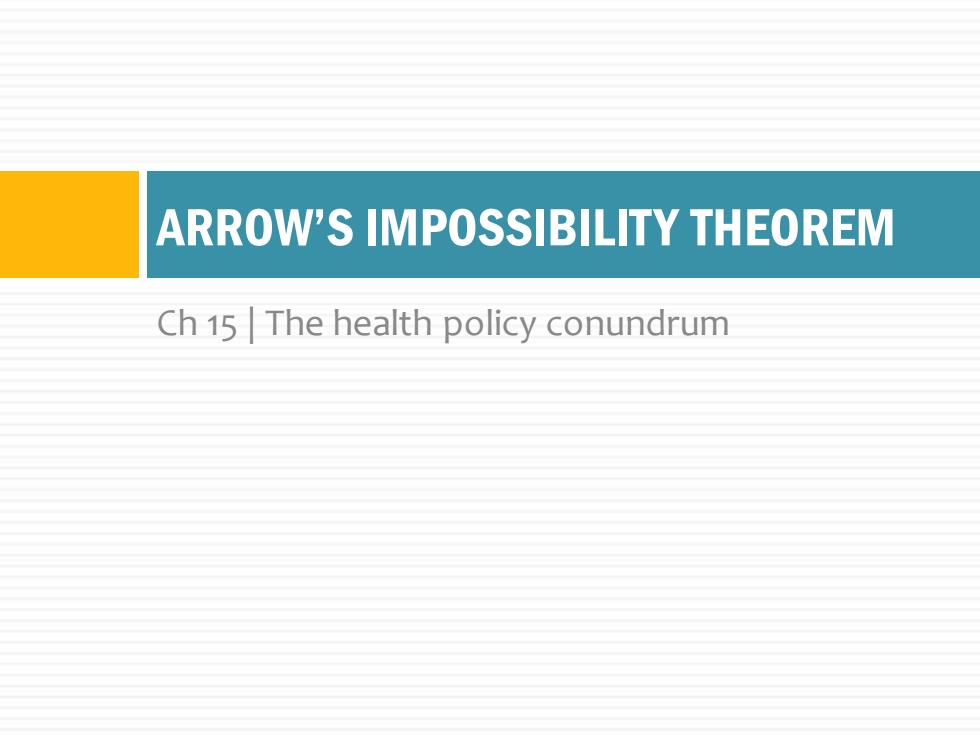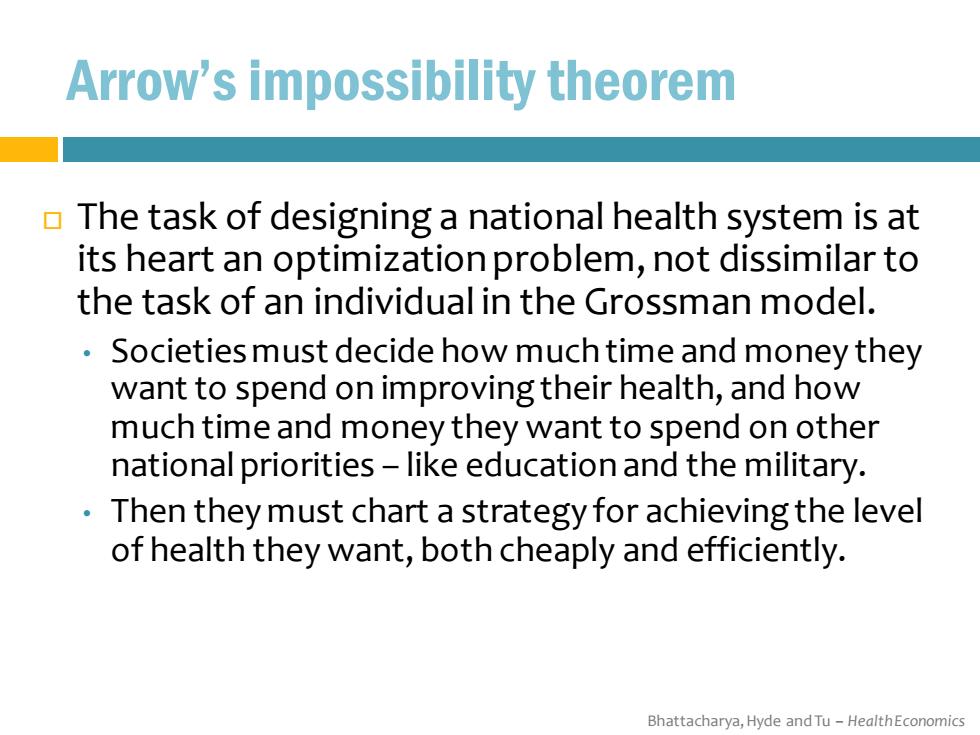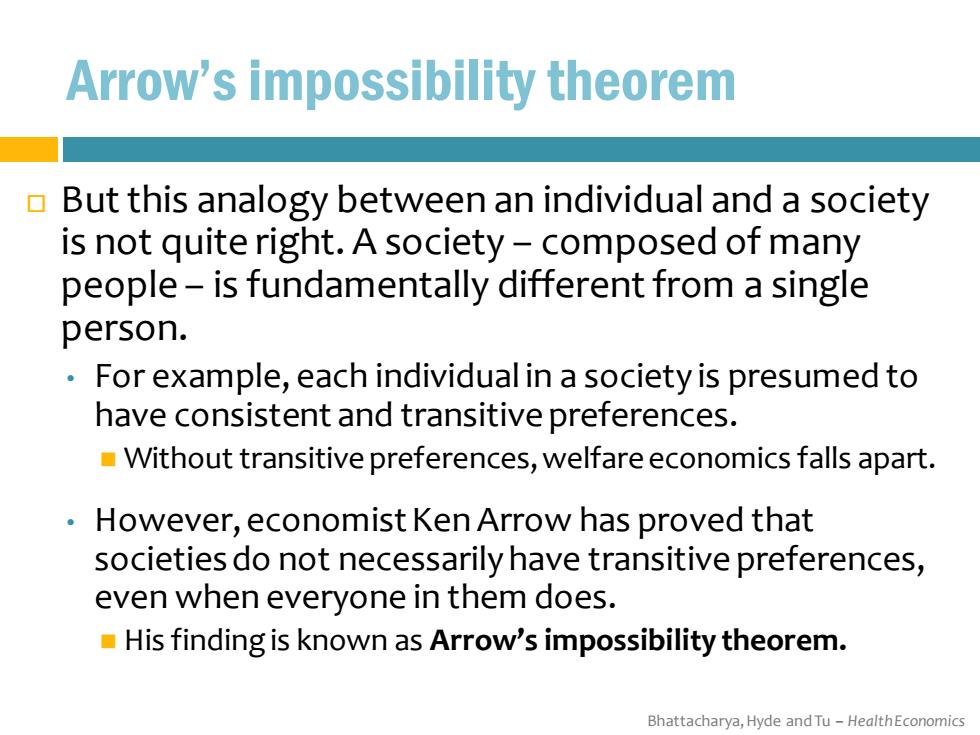
CHAPTER 15 THE HEALTH POLICY CONUNDRUM
CHAPTER 15 THE HEALTH POLICY CONUNDRUM

Markets for health care and insurance We have learned about the problems that arise in both these markets Markets for health care services Oligopoly pricing Monopoly rents for doctors and specialists ■Medical arms races Health insurance markets Adverse selection and underinsurance Moral hazard and technology overuse Health policy tries to deal with these problems(but every new policy creates new problems or exacerbates old ones). Bhattacharya,Hyde and Tu-HealthEconomics
Bhattacharya, Hyde and Tu – Health Economics Markets for health care and insurance We have learned about the problems that arise in both these markets Markets for health care services ◼ Oligopoly pricing ◼ Monopoly rents for doctors and specialists ◼ Medical arms races Health insurance markets ◼ Adverse selection and underinsurance ◼ Moral hazard and technology overuse Health policy tries to deal with these problems (but every new policy creates new problems or exacerbates old ones)

ARROW'S IMPOSSIBILITY THEOREM Ch 15 The health policy conundrum
Ch 15 | The health policy conundrum ARROW’S IMPOSSIBILITY THEOREM

Arrow's impossibility theorem The task of designing a national health system is at its heart an optimization problem,not dissimilar to the task of an individual in the Grossman model. Societies must decide how much time and money they want to spend on improving their health,and how much time and money they want to spend on other national priorities-like education and the military. Then they must chart a strategy for achieving the level of health they want,both cheaply and efficiently. Bhattacharya,Hyde and Tu-HealthEconomics
Bhattacharya, Hyde and Tu – Health Economics Arrow’s impossibility theorem The task of designing a national health system is at its heart an optimization problem, not dissimilar to the task of an individual in the Grossman model. • Societies must decide how much time and money they want to spend on improving their health, and how much time and money they want to spend on other national priorities – like education and the military. • Then they must chart a strategy for achieving the level of health they want, both cheaply and efficiently

Arrow's impossibility theorem But this analogy between an individual and a society is not quite right.A society -composed of many people-is fundamentally different from a single person. For example,each individual in a society is presumed to have consistent and transitive preferences. Without transitive preferences,welfare economics falls apart. However,economist Ken Arrow has proved that societies do not necessarily have transitive preferences, even when everyone in them does. His finding is known as Arrow's impossibility theorem. Bhattacharya,Hyde and Tu-HealthEconomics
Bhattacharya, Hyde and Tu – Health Economics Arrow’s impossibility theorem But this analogy between an individual and a society is not quite right. A society – composed of many people – is fundamentally different from a single person. • For example, each individual in a society is presumed to have consistent and transitive preferences. ◼ Without transitive preferences, welfare economics falls apart. • However, economist Ken Arrow has proved that societies do not necessarily have transitive preferences, even when everyone in them does. ◼ His finding is known as Arrow’s impossibility theorem